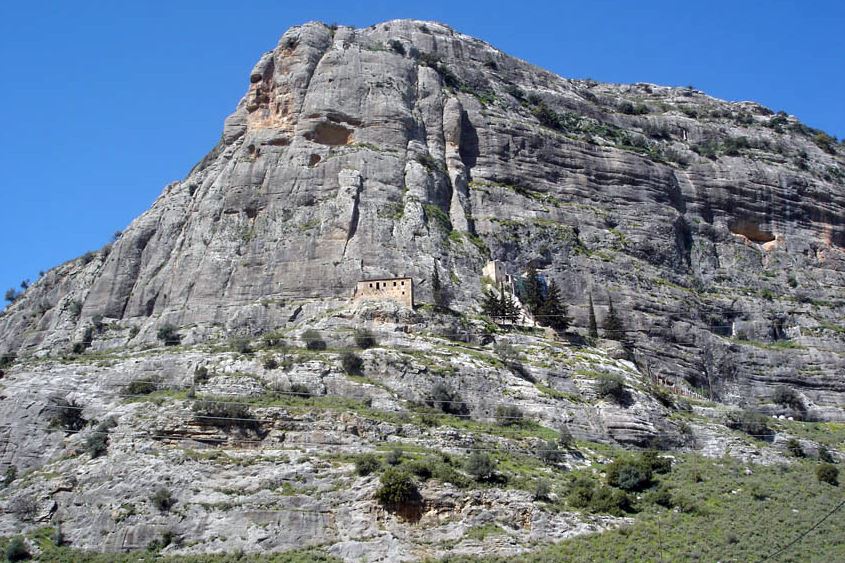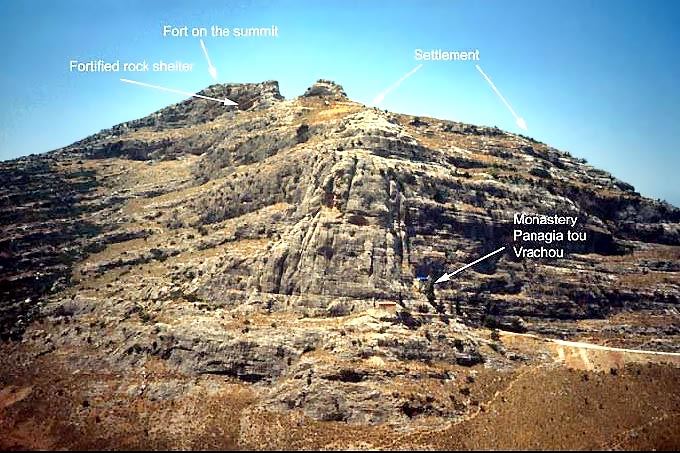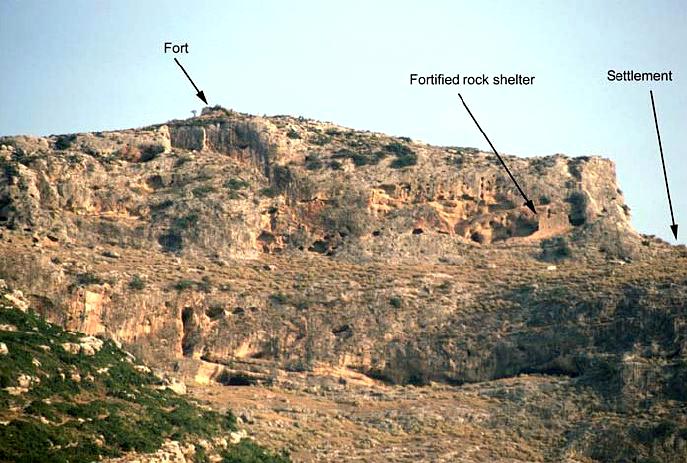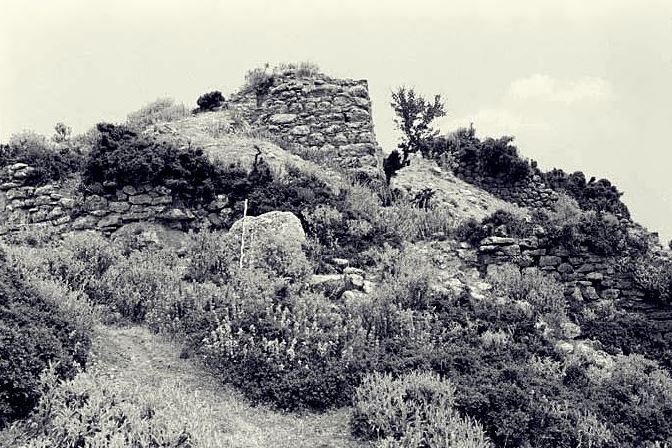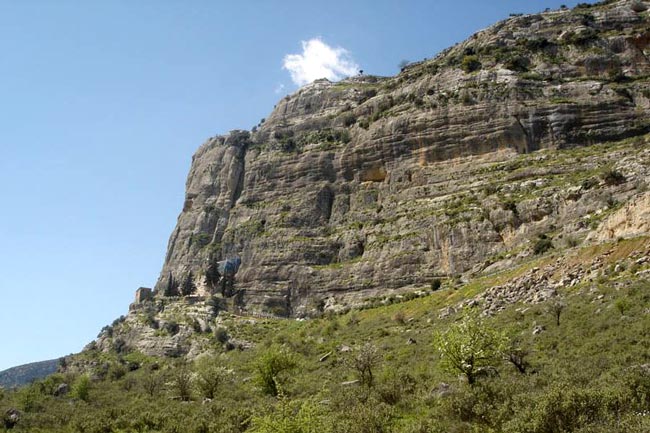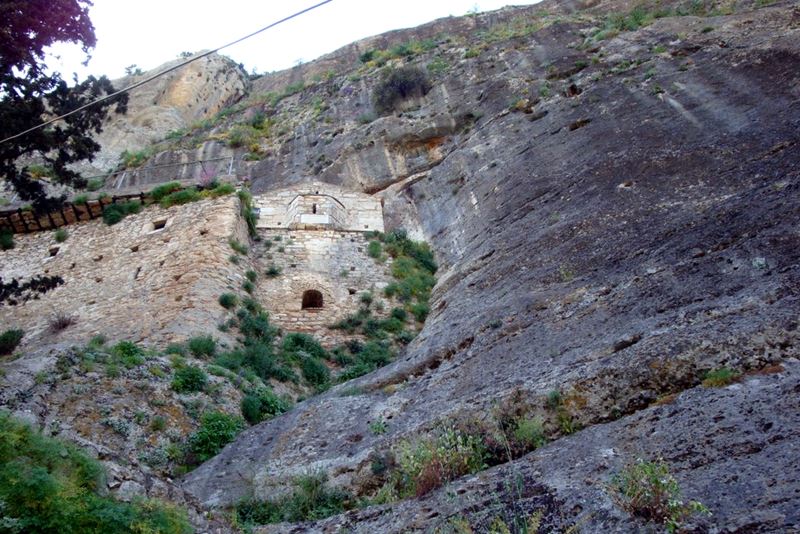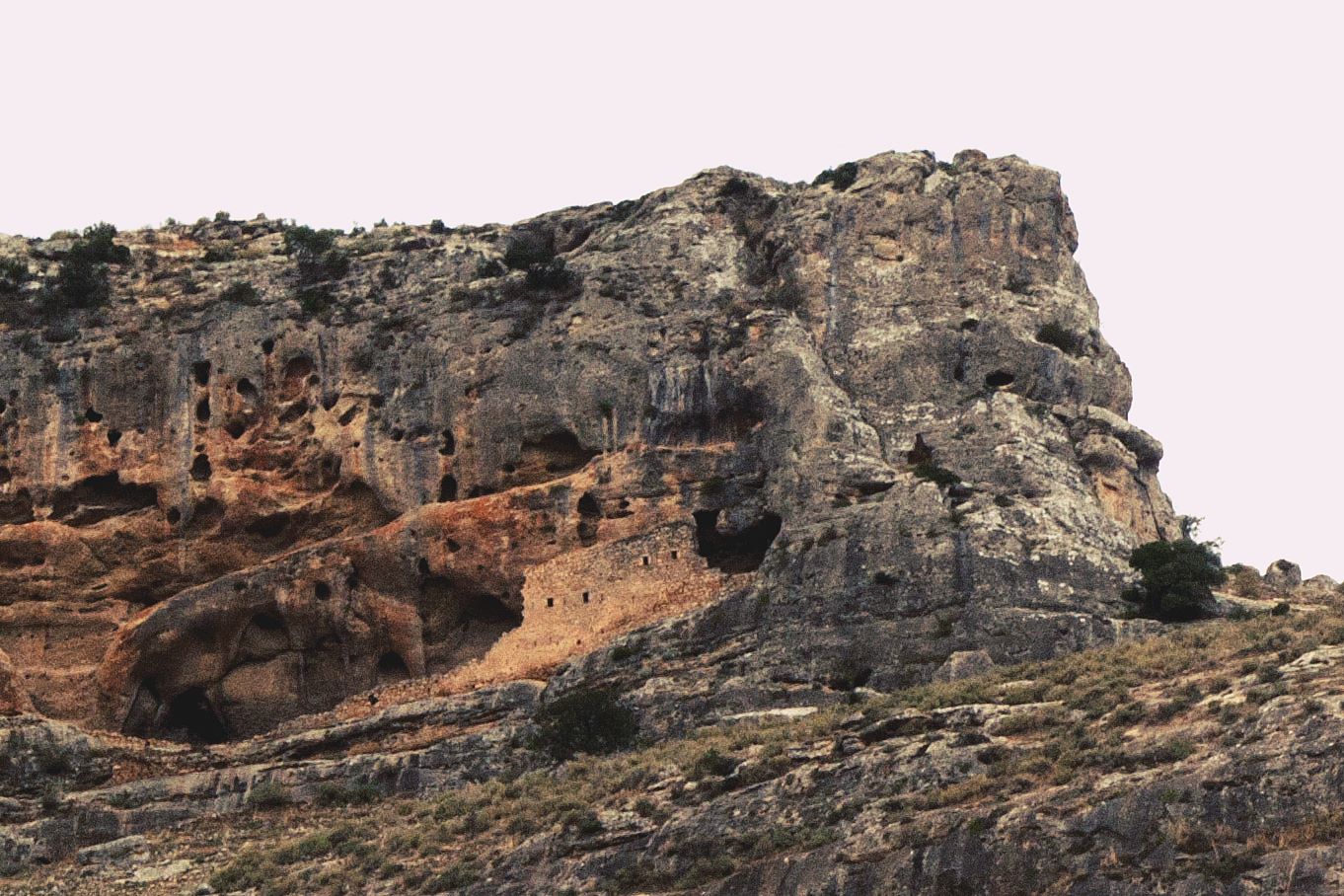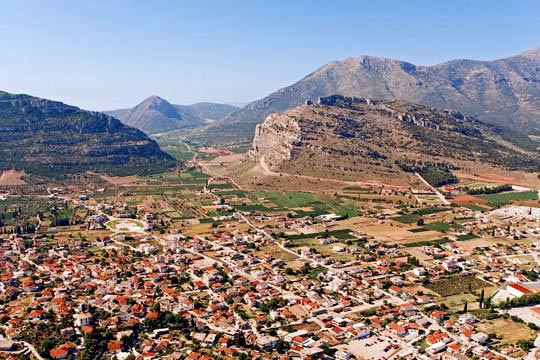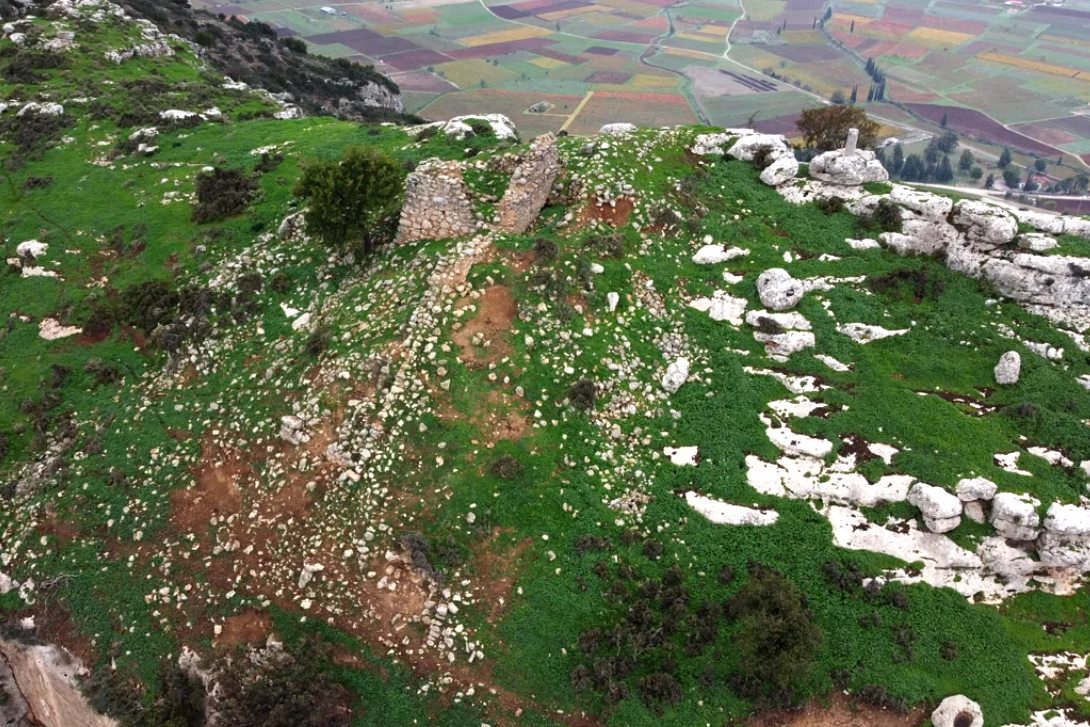Nemea, Nemea, Corinthia,Peloponnese
Castle of Polyfengo
| Location: |
| On a rocky hill south of Nemea town in the region of Corinth in northern Peloponnese |
| Region > Prefecture: | 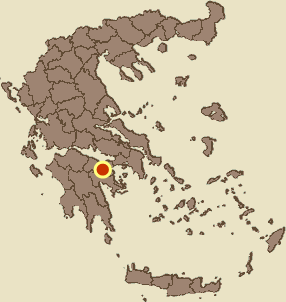 |
| Peloponnese Corinthia | |
| Municipality > Town: | |
| City of Nemea • Nemea | |
| Altitude: | |
|
Elevation ≈ 590 m (Relative Height≈250 m) |
| Time of Construction | Origin | |
| 13th century | FRANKISH |
|
| Castle Type | Condition | |
| Castle Ruins |
In Ruins
|
A Frankish castle on an insulated impressive rocky hill south of the modern town Nemea and close to ancient Nemea.
It was one of the castles guarding the pass of Kontoporeia odos, i.e the ancient road from Corinth to Argolid and to southern Peloponnese.
It was one of the castles of the Castellany of Corinth.
History
The earliest reference to the castle occurs in the French version of the Chronicle of the Morea, under the name Poliphant. Knowing that the French version tells stories until 1305, it is easy to conclude that the castle was built in the 13th century.
In several other historical sources, it is mentioned under a number of different names: Polifant, Agios Georgios, San Giorgio, Sancto Giorgio de Polisengo, S. Zorzi Tropico.
In 1320, it was captured by the Byzantine general Andronikos Asan. It was a period of serious advancement of the Despotate of Mystras against the Principality of Achaea.
Perhaps the Byzantines lost it soon, because it is recorded in the list of the castles of the Principality in 1377 Santo Georgio de Polifengno.
Generally, the castle is mentioned in all the Hopf list: In the list of 1377 it is Lo castello de Sancto Georgio de Polifengno. In the list of 1463 is S. Zorzi Tropico, one of the castles that were – temporarily – under Venetian occupation. ("Tropico" is considered a corruption of "Tropaiforos" one of the Greek epithets of Saint George.) In 1467 it is recorded under the same name but it is no longer in the hands of the Venetians, it is in the hands of the Ottomans. In the list of 1471 it is recorded again as Venetian under the name San-Zorzi Tropico.
The Ottomans captured it – easily – in 1458, in the first campaign of Mohammed the Conqueror in the Morea. They did not bother much and the castle was occupied for a while by the Venetians during the First Venetian-Turkish War (1463-1470). At the end of that war, it was permanently occupied by the Turks, who apparently did not use it. It is not known exactly when the castle was abandoned, but it must have been in the early years of the Tourkokratia.
Structure, Fortification & Buildings
Very few ruins remain from the castle which has never been properly researched.
The summit is fortified by a wall and a square tower. A double-arched cistern is located near the tower, at the edge of the cliff. The ruins of a village spread over a sloping plateau below the summit.
On the south side of the hill, at the level of the settlement, there is a fortified cave-chapel with a partially preserved wall painting depicting the Presentation in the Temple. This may be the site of the earliest church built on Polyphengo, which is first mentioned in sources dating to 1402.
On the eastern side of the hill, an impressive post-medieval monastery, Panagia tou Vrachou still stands against the cliff. But this was built a long time after the castle was abandoned and is not related to it except that it is located close to its ruins.
| First entry in Kastrologos: | January 2016 | Last addition of photo/video: | March 2024 |
Sources
- Effie F. Athanassopoulos, “ Landscape Archaeology and the Medieval Countryside:Settlement and Abandonment in the Nemea Region”, published online.
- Video and photos 12, 13 Panayiotis Lambropoulos, Nov 2021
- Video by G Traveller Κάστρο Πολυφέγγους | Castle of Polyfengo (January 2024)
|
|
| Access |
|---|
| Entrance: |
| Free access |



